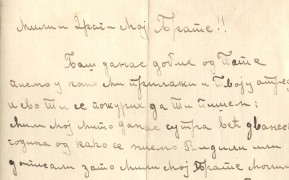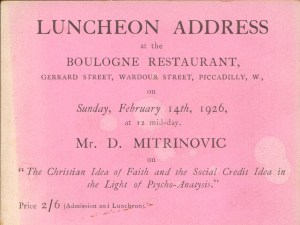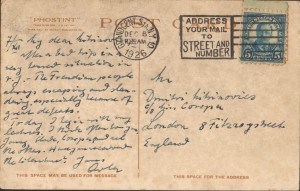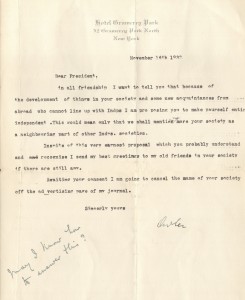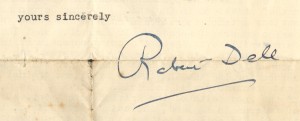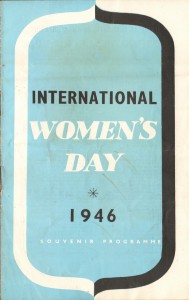This week’s blog follows on from my last update, which discussed the morning lectures at our recent Special Collections Symposium held to launch the catalogue of the Mitrinović Archive, due to go online in November.
In the afternoon it was the turn of the collection to take centre stage. I spoke about the history of the Archive and Library, outlining how they came together, their care and growth under the management of Dimitrije Mitrinović’s circle, and the role of the New Atlantis Foundation (now Mitrinović Foundation) in ensuring the survival of the records and books with a real regard for the value of provenance. The NAF was also instrumental in securing homes for the Mitrinović’s collection firstly at Belgrade, and later at Bradford, using their connections with Andrew Rigby, then of the Peace Studies department. The Foundation continues to support the collection, such as by funding this current cataloguing project.
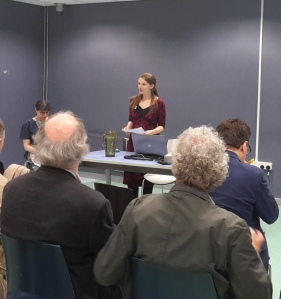
Emma Burgham, Project Archivist
I tried to convey the research potential of the collection, listing some of the significant contacts the group Mitrinović had and a few of the numerous subject areas the collection covers from intentional communities to the history of psychology, Modernist art to Social Credit, and embracing such diverse figures as Nobel prize-winning chemist Frederick Soddy, Edith Sitwell and S.G. Hobson. Artists, politicians, writers, philosophers, political theorists, etc. all came into contact with Mitrinović, often with interesting results. I wanted to convey the complexity, and therefore the richness, of the collection. A multi-lingual collection where much of the archive cross-refers to, or results from the study of, other parts and connects to Mitrinović’s library make cataloguing challenging, but result from and create the breadth and depth that have become fully apparent in the course of this project.
We were fortunate to have Dr Tom Steele with us to bring in the local, Yorkshire side of Mitrinović’s story. Dr Steele discussed A.R. Orage and the Leeds Arts Club, showing the pioneering role the Club played in bringing Nietzscheism and the avant garde to a wider audience. Dr Steele showed how Leeds became a centre for modernism across the arts through such figures as Orage, Michael Sadler and Bradford’s Tom Heron. I had always been curious about the fact that Mitrinović’s first public lecture in Britain was delivered at the University of Leeds in 1915. Dr Steele’s portrait of the city made it clear that Leeds was an obvious location for Mitrinović’s talk on the sculptor Ivan Meštrović. It emerged that the intellectual currents that had seized hold of Orage were the same as those driving Mitrinović. No wonder Orage hired Mitrinović as a columnist for his radical journal, The New Age, giving Mitrinović a platform for his ideas.
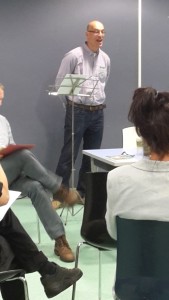
Martin Levy, independent researcher, author and Special Collections Assistant
Special Collections Assistant and author Martin Levy tackled a complex aspect of Mitrinović’s life when he chose to look at his relationship with the German philosopher Erich Gutkind. Levy described how the two met in 1914 after Mitrinović read and was utterly blown away by Gutkind’s Sidereal Birth. He would later state that if Gutkind hadn’t written the book, he himself would have had to, so central was it to his own philosophy. Together with Kandinsky they conceived a project to form an intellectual and artistic elite, the Blutbund, which would lead a change in the world. They planned to produce a yearbook as a follow-up to the Blaue Reiter Almanac. The First World War intervened, stirring up nationalist feelings and placing individuals in jeopardy. Mitrinović, for one, fled to England, taking Gutkind’s ideas with him. They would be core reading for anyone wishing to study with him for the rest of his life. Levy spoke about the hardship Gutkind faced when in 1933 and with Storm Troopers at his door, he and his wife Lucie fled to America. He struggled financially and his ideas never really took hold as he might have hoped. This lack of popularity led to an interesting discussion about the complexity of his and Mitrinović’s writing, its roots in poetic Russian philosophy and the possible purposes behind it.

Margaret Shillan, Mitrinovic Foundation trustee
Feedback I’ve received after the Symposium suggests that the final speakers of the day were the most intriguing. John MacDermot and Margaret Shillan are trustees of the Mitrinović Foundation who grew up in the community he and his circle established at Richmond. John’s talk looked at Mitrinović and the group as collectors of art, discussing their patronage of such well-known figures as Miro, Picasso, Magritte and Roy de Maistre. I found it interesting to hear how artworks were shared amongst the group. Never bought as an investment, but always chosen for their beauty and meaning, paintings, sculptures, antiquities and craft pieces were given as gifts. For example, John shared his memory of being given a walking stick by Mitrinović himself, who collected them.
Margaret Shillan looked at the elegant house of Norfolk Lodge, Richmond, which the group acquired in the 1940s and where Mitrinović lived out his days amongst his close friends. After his death, various members of the New Atlantis Foundation group continued to live in the house until it was eventually sold. Margaret described how each of the public rooms functioned, which neatly set the art collection in context and illustrated the sorts of activities the Foundation was engaged in. In both of their presentations and the subsequent discussion, Margaret and John gave us a sense of the community that formed around Mitrinović, bound to each other through what they termed a “Personal Alliance”. Both shared memories of Mitrinović and Norfolk Lodge that brought them to life. These were uniquely personal contributions, not often seen at an academic event and fascinating for those who were there.

Delicious Serbian Lazy Apple Cake, one of the day’s highlights!
We were fortunate to find a range of speakers for our symposium, exemplifying some of the major subject areas represented in the collection. One of the exciting things about organising the event was the huge range of possibilities I had for subject matter. I felt that our programme succeeded in reflecting something of the breadth of Mitrinović’s life and interests, but it was a pleasant surprise on the day to find how well the various talks connected to each other. Themes emerged across the day: the influence of Nietzsche, Mitrinović’s skill as an operator – building networks and somehow obtaining funding for his ventures, the tensions between personal development and public action for societal change, federalism and devolution, all appeared in various lectures. The diversity of Mitrinović’s interests and activities means that there is a great deal to research in the Archive and Library, and indeed several speakers are already planning return visits. Together with the Mitrinović Foundation, we are considering how we might organise future events based around the collection after the current project finishes. Watch this space!






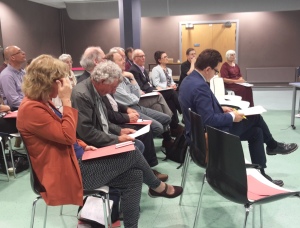
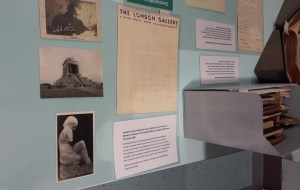
![NAF 1-8-2-20 Letter from Eden's Secretary, [1941]](https://eleventhhourarchive.files.wordpress.com/2015/06/naf-1-8-2-20-letter-from-edens-secretary-1941.jpg?w=187&h=300)
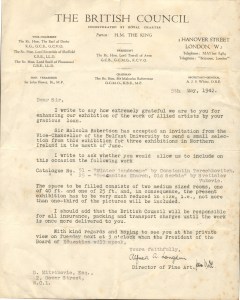

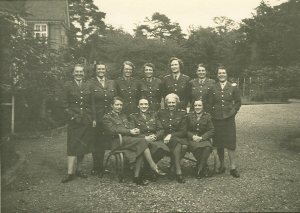
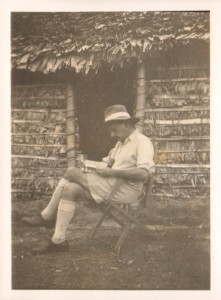

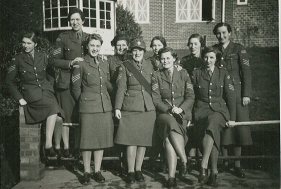

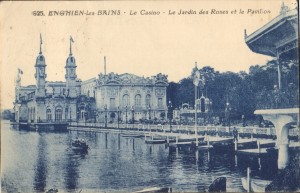
![NAF 1-8-3-28 Letter from Janko Lavrin 17 Nov 1925, p.2 [crop, postscript]](https://eleventhhourarchive.files.wordpress.com/2015/04/naf-1-8-3-28-letter-from-janko-lavrin-17-nov-1925-p-2-crop-postscript.jpg?w=300&h=89)
